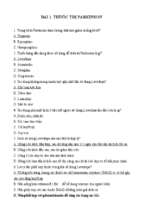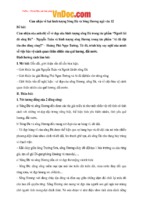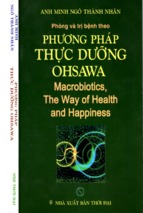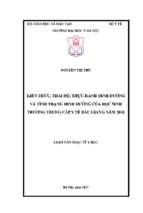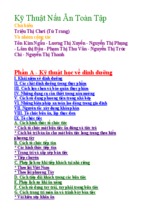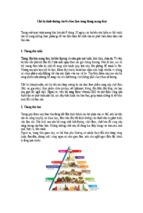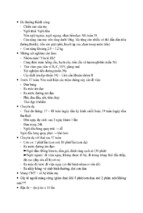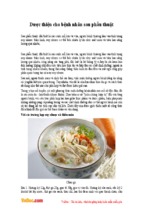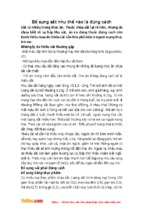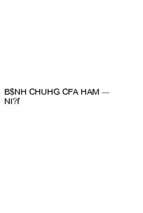National Journal of Research in Community Medicine. Vol.5. Issue 1. Jan.-Mar. 2016(060-063)
ISSN - Print: 2277 – 1522, Online: 2277 – 3517)
Original Research Article
Assessment of Nutritional Status in School Boys Aged 10-19 Years- A Cross
Sectional Study in Aligarh
Mohammad Atif 1, M Athar Ansari2, Zulfia Khan3, Anees Ahmad4
Date of Submission: 28.01.2016
Date of Acceptance: 22.02.2016
Abstract
Background: Adolescent is the period between 10 and 19 years. Poor nutritional status during adolescence is
an important determinant of health outcome. The adolescents have different needs and have diverse problems
and health remains a neglected issue in majority of times by school going adolescents. Objectives: To
study the nutritional status in adolescent school boys aged 10-19 years. Material and Methods: A crosssectional study was done covering 500 students between 10-19 years of age from rural and urban schools of
district Aligarh. Students were interviewed and anthropometric measurements were taken. The data obtained
were tested statistically by percentages and Chi-square Test using SPSS 20. Results: The overall prevalence
of thinness was found to be 20.6 %.Overall 6.0% students were found to be suffering from severe thinness.
Conclusion: Adolescent is vulnerable age group with high prevalence of malnutrition, therefore should be
given priority in national health programs.
Keywords: Anthropometry, adolescents, thinness, nutritional status.
Authors:
1. Demonstrator, Department of Community
Medicine, SHKM, GMC, Mewat, Haryana,2,3Professor&4- Associate Professor, Department of
Community Medicine, J.N.Medical College
AMU, Aligarh
INTRODUCTION
The term adolescence meaning “to emerge” or
“achieve identity” is a relatively new concept,
especially in developmental thinking. The origin of
the term is from Latin word; ‘adolescere’ meaning,
“to grow, to mature”. However, a universally
accepted definition of the concept has not been
established. 1 World Health Organisation identifies
adolescence as the period in human growth and
development that occurs after childhood and before
adulthood, from ages 10 to 19. Human growth and
maturation are continuous processes, and transition
from childhood into adulthood is not abrupt, the
period of adolescence encompasses rapid changes in
physical changes and maturation, and in
psychological development.²
Corresponding Author:
Dr. Mohammad Atif
Department of Community Medicine, S.H.K.M
Govt. Medical College Nalhar (Mewat), Haryana
India. 122107
Email:
[email protected]
Nutrition is the intake of food, considered in relation
to the body’s dietary needs. Good nutrition
comprises an adequate, well balanced diet combined
with regular physical activity, is a cornerstone of
good health. Poor nutrition can lead to reduced
immunity, increased susceptibility to disease,
impaired physical and mental development, and
reduced productivity. 3
Nutrition is only one aspect of health behaviours and
the development of these in relation with chronic
disease is better conceptualized in a ‘chain of risk’
framework.4
Gillespie5 studied nutritional status of adolescents
and found the main nutritional issues of adolescents
in low- and middle-income countries are 60
Assessment of Nutritional Status in School Boys Aged 10-19 Years. Mohammad Atif et al.
Click here for more articles: www.commedjournal.in
National Journal of Research in Community Medicine. Vol.5. Issue 1. Jan.-Mar. 2016(060-063)
ISSN - Print: 2277 – 1522, Online: 2277 – 3517)
1. Undernutrition and associated deficiencies, often
originating earlier in life
2. Iron deficiency anaemia and other micronutrient
deficiencies
3. Obesity and associated cardiovascular disease risk
markers
4. Inadequate or unhealthy diets and lifestyles
It has been seen from the earlier studies that there
has been considerable neglect of the adolescent
phase of life in research, education and health care.
Because adolescents are less vulnerable to disease
than the very young and very old, health problems
specific to their age group have been given little
prominence until now especially in developing
countries like India.
MATERIAL AND METHODS
The study was done in registered schools of the
Department of Community Medicine, JNMC, AMU,
Aligarh. The total population of male adolescents in
all the schools was 2533, out of which a sample of
512 students (256 from the rural schools and 256
from the urban schools) were selected using
Probability Proportionate to Size sampling (P.P.S.).
Only 500 students cooperated in the study. The
sample size was
calculated using the formula –
Sample = {(1.96)2 PQ} / L2.
where prevalence
(P) = 20%, Q = (1- P), Precision (L) =9%.
The age of the student was recorded on their last
birthday (Gregorian calender) from the school
record. A detailed clinical and dietary history and a
thorough physical examination were conducted for
each adolescent and clinical impression was made at
the end of the examination. Weight (kgs) and height
(cms) were taken according to standard protocol.
The present cross sectional study was carried out for
a period of one year from 1st of August 2013 to 31st
July 2014. Male students between 10 to 19 years
were included in the study. Students below 10 &
above 19 years, non co-operative, chronic absentee
and girl students were excluded. In the study
pretested pre-framed proforma, measuring tape and
weighing machine were used. Before the starting of
the study approval was taken from Institutional
Ethical Committee. Permission was taken from
school authority in each and every school. Principal
of the schools was the main authority in all schools.
If a student was 18 years or old, an informed consent
was also taken. Health education & adequate
counselling were provided to all the students of
concerned class. The data obtained were tested
statistically by percentages and chi-square test.
SPSS 20 was used for the same.
In the study, thinness was defined as Z value
between -2 SD to -3 SD in WHO Z-Score and severe
Thinness as Z value < -3SD in WHO Z-Score.
RESULTS
Table 1. Socio-demographic characteristics of the
study population
Age
group(years)
Early
adolescent
Place
Total
Urban
Rural
No
%
No.
47
18.36
143
66
%
No
%
127
52.05
174
34.80
55.85
69
28.28
212
42.40
25.79
48
19.67
114
22.80
(10-13 yrs)
Mid
adolescent
(14-16 yrs)
Late –
adolescent
(17-19 yrs)
Table 2. Distribution of the Thinness (-2 SD to -3
SD in WHO Z-Score) according to the age of the
study population
Age group
Total
Thinness
No.
%
No.
10-13 yrs
174
50
28.74
14-16 yrs
212
48
22.64
17- 19 yrs
114
5
4.39
Total
500
103
20.60
61
Assessment of Nutritional Status in School Boys Aged 10-19 Years. Mohammad Atif et al.
Click here for more articles: www.commedjournal.in
National Journal of Research in Community Medicine. Vol.5. Issue 1. Jan.-Mar. 2016(060-063)
ISSN - Print: 2277 – 1522, Online: 2277 – 3517)
Table 3 . Distribution of the Severe Thinness (< 3SD) according to the age in the study population
Age group
Severe Thinness
Total
No.
No. (%)
10-13 yrs
174
18
10.34
14-16 yrs
212
9
4.24
17- 19 yrs
114
3
2.63
Total
500
103
6.00
The age of the study population ranged from 10-19
years. As shown in table 1, maximum 212 (42.4%)
students belonged to 14 -16 years age group (mid
adolescence) followed by 174 (34.8%) in the 10 to
13 years (early adolescence) and the least population
of 114 (22.8%) were in the 17 to 19 years age group
(late adolescence).
In urban areas, maximum population was of mid
adolescents (55.85%) in compared to rural areas,
where maximum population was of early
adolescents (52.05%).
The table 2 depicts the distribution of thinness,
which in this study has an overall prevalence of
20.6% using WHO Z- score between -2 to -3 SD
(BMI for age). The maximum prevalence of thinness
i.e. 28.74% was in the age group of 10-13 years
followed by 22.64% in mid adolescence (14-16
years) and the minimum prevalence of 4.39% was at
the age of 17-19 years. This distribution was highly
significant. (Chi-Square – 18.6, degree of freedom –
2 p value = 0.000). Since the height spurt begins in
the early adolescence and the weight is put on in the
late adolescence, this might be the reason for the
more prevalence of thinness in the age groups 10-13
years and 14-16 years than in 17-19 years
The table 3 shows the distribution of severe
thinness, which in this study had an overall
prevalence of 6.0% using WHO Z-score between < 3 SD (BMI for age). Severe thinness was most
prevalent in early adolescence and that was 10.34%.
Least prevalence of severe thinness was seen in late
adolescence and was 2.63%. This distribution was
significant (Chi square- 8.11, degree of freedom- 2,
p value =0.017).
DISCUSSION
In a study done in Aligarh by Ahmad et al showed
that in rural area, majority of the population (59%)
belonged to 10-13 years age group as compared to
(26.5%) of urban area of same age group6.This
finding is similar to the present study because both
studies done in Aligarh but at different times.
Kathawate et al found that prevalence of thinness
and severe thinness amongst adolescents was 27%
and 23% respectively in Maharashtra 7. Notably, the
rate of severe thinness was significantly higher in
early adolescence period.
Srivastav et al studied adolescent age group in
Noida. They found that the overall prevalence of
thinness was found to be 23.2% and severe thinness
was found to be 7.4%. The prevalence of thinness
and severe thinness in boys was 24.1% and 8.6%
respectively8. The findings of this study was similar
to the present study. In another study, Rahman9
studied school going adolescents in Bangladesh. He
found that prevalence of thinness among boys was
32.0% which was higher than our study. Mankar10 et
al did a cross-sectional study in the PHC area of
Nere in Panvel. He showed that overall, 50.1% of
the adolescents were thin which was much higher
than our study and this is an alarming sign. These
differences may be because of regional differences.
Medhi et al11 studied adolescents in Assam and
found that prevalence of thinness in boys was very
high and was 59.9%. Mukhopadhyay12 did a crosssectional study on Bengali adolescents. He used
BMI to assess the nutritional status and showed
overall rate of under nutrition was 36.49%.
Regardless of sex, the rate of undernutrition
progressively increased from 31.88% to 39.80%
with the advancement of age.
CONCLUSION
Nutrition is an important aspect of adolescence as it
is a rapidly growing period of life. Adolescents are
in the process of establishing responsibility for their
own health-related behaviours including diet. It is
therefore an appropriate time for health promotion
programmes based on documented relationships
between behaviour in this age group, obesity and
other disease risk factors. Adolescents can and
should take responsibility for their nutrition and the
long-term repercussions on health.
62
Assessment of Nutritional Status in School Boys Aged 10-19 Years. Mohammad Atif et al.
Click here for more articles: www.commedjournal.in
National Journal of Research in Community Medicine. Vol.5. Issue 1. Jan.-Mar. 2016(060-063)
ISSN - Print: 2277 – 1522, Online: 2277 – 3517)
ACKNOWLEDGMENT
I would like to express my profound gratitude to all
the participants for their cooperation and for their
immense faith they showed in me.
CONFLICT OF INTEREST: NIL
SOURCE OF FUNDING:NIL
REFERENCES
1. Thaker RB, Verma AP.A study of perceived
stress and coping styles among mid
adolescents. Natl J Physiol Pharm
Pharmacol 2014;4:25-8.
2. Young People’s Health- A Challenge for
Society. Report of a WHO Study Group on
Young People and “Health for All by the
Year 2000” Geneva, World Health
Organization, 1986. (WHO Technical
Report Series No- 731).
3. Adolescents: Health risks and solutions,
SEARO. WHO 2014;(345).accessed on http://www.searo.who.int/thailand/factsheet
s/fs0027/en/
4. Kuh D, Power C, Blane D, Bartley M.
Social pathways between childhood and
adult health. In: Kuh D, Ben-Shlomo Y
(eds). A life course approach to chronic
disease epidemiology. Oxford: Oxford
University Press, 1997:169-98.
5. Gillespie S. Improving adolescent and
maternal nutrition: An overview of benefits
and options. UNICEF Staff Working Papers,
Nutrition Series;1997.
Bangladesh. Journal of Asian Scientific
Research, 2014;4:39-6
10. .Mankar M, Joshi S, Velankar D, Mankar J.
Nutritional status of adolescents in rural
area of Panvel. IJMAHS 2014; 1.
11. Medhi GK, Hazarika NC, Mahanta J.
Nutritional status of adolescents among tea
garden workers. Indian J Pediatr
2007;74:343–7.
12. Mukhopadhyay A, Bhadra M, Bose K.
Anthropmetric assessment of nutritional
status of adolescents of Kolkata, West
Bengal. J.Hum. Ecol 2005;18:213-6.
6. Ahmad A, Khalique N, Azmi SA, Khan Z.
Pattern of sexual development and
anthropometry in adolescent males. Delhi
Psychiatry Journal 2011;14:2.
7. Kathawate V, Ghosh S. Nutritional status of
adolescents in agrarian crises-affected area
of Maharashtra. Indian J Community Med
2013;38:180–3.
8. Srivastav S, Mahajan H, Grover VL.
Nutritional status of the government school
children of adolescent age group in urban
areas of district Gautambudh-nagar, Uttar
Pradesh. National Journal of Community
Medicine 2013;4:2–5.
9. Rahman MA. Prevalence of stunting and
thinness among adolescents in rural area of
63
Assessment of Nutritional Status in School Boys Aged 10-19 Years. Mohammad Atif et al.
Click here for more articles: www.commedjournal.in


